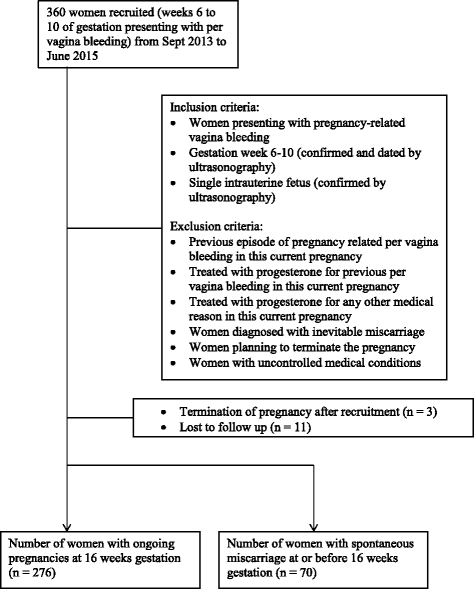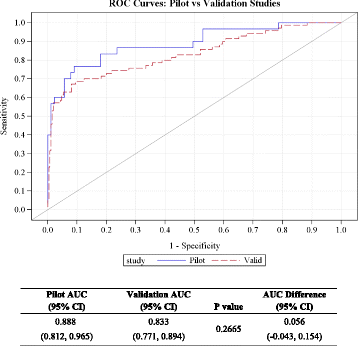Validation of serum progesterone <35nmol/L as a predictor of miscarriage among women with threatened miscarriage
- PMID: 28264669
- PMCID: PMC5340043
- DOI: 10.1186/s12884-017-1261-4
Validation of serum progesterone <35nmol/L as a predictor of miscarriage among women with threatened miscarriage
Abstract
Background: Our recent paper, based on a pilot cohort of 119 women, showed that serum progesterone <35 nmol/L was prognostic of spontaneous miscarriage by 16 weeks in women with threatened miscarriage in early pregnancy. Using a larger cohort of women from the same setting (validation cohort), we aim to assess the validity of serum progesterone <35 nmol/L with the outcome of spontaneous miscarriage by 16 weeks.
Methods: In a prospective cohort study, 360 pregnant women presenting with threatened miscarriage between gestation weeks 6-10 at a tertiary hospital emergency unit for women in Singapore were recruited for this study. The main outcome measure measured is spontaneous miscarriage prior to week 16 of gestation. Area under the ROC curve (AUC) and test characteristics (sensitivity, specificity, positive and negative predictive value) at a serum progesterone cutpoint of <35 nmol/L for predicting high and low risk of spontaneous miscarriage by 16 weeks were compared between the Pilot and Validation cohorts.
Results: Test characteristics and AUC values using serum progesterone <35 nmol/L in the validation cohort were not significantly different from those in the Pilot cohort, demonstrating excellent accuracy and reproducibility of the proposed serum progesterone cut-off level.
Conclusions: The cut-off value for serum progesterone (35 nmol/L) demonstrated clinical relevance and allow clinicians to stratify patients into high and low risk groups for spontaneous miscarriage.
Keywords: Cut-off level; Miscarriage; Predictive; Progesterone.
Figures
References
-
- Cunningham FG. Williams Obstetrics 24th edition. USA: McGraw-Hill Education. Medical; 2014.
MeSH terms
Substances
LinkOut - more resources
Full Text Sources
Other Literature Sources
Medical



